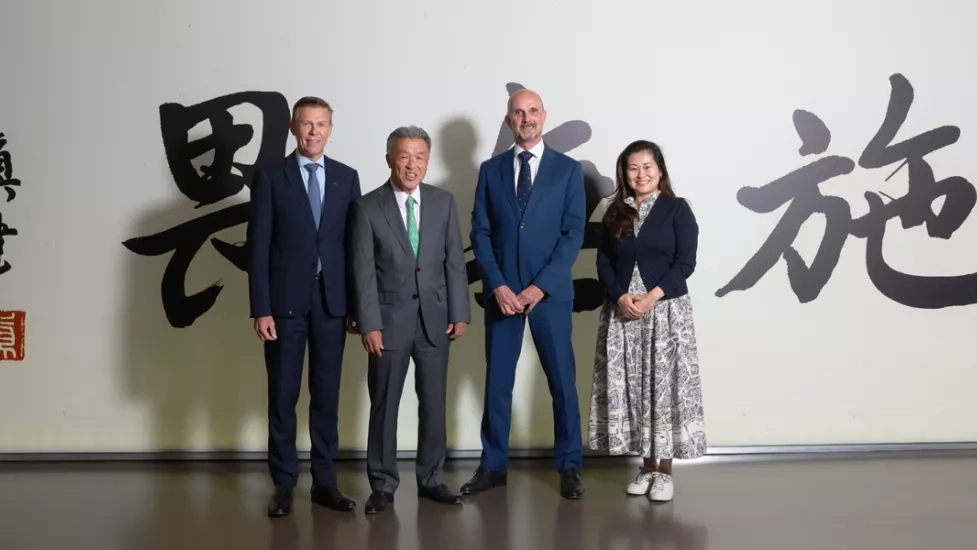Clinical Evidence: EQUIA Performs Like Composite in Class I and Class II Fillings
02/24/2015
Results from an independent four-year randomized clinical trial* which evaluated the clinical performance of EQUIA were recently published in a leading oral health journal. The study, led by Professor Sevil Gurgan from the Department of Restorative Dentistry at Hacettepe University in Turkey, concluded that EQUIA performs like composite in Class I and Class II fillings, offering a durable solution for posterior restorations.
These findings support the growing evidence of EQUIA’s favorable properties as a restorative solution, highlighting the evolution of glass hybrid restorative materials in recent years and paving the way for modern dentistry.
Reliable posterior restorations
The clinical trial was conducted on permanent posterior teeth both in Class 1 and Class 2 carious lesions of young patients with the average age of 24 years. A total of 140 fillings (80 Class 1 and 60 Class 2) in 59 patients was restored with EQUIA and Gradia restorative systems. Two independent examiners evaluated at baseline and at one, two, three, and four years post restoration according to the modified US Public Health Service criteria. Polyvinyl siloxane impression negative replicas at each recall were observed under scanning electron microscopy (SEM) to evaluate surface characteristics.
The clinical efficacy of EQUIA and Gradia Direct Posterior was determined by evaluating the anatomical form, color match, marginal discoloration, marginal adaptation, secondary caries occurrence, and retention at one year and annually for four years.
The trial’s results showed that neither EQUIA nor Gradia restorations were downgraded in anatomical form, secondary caries, surface texture, postoperative sensitivity, and color match during the four years. Based on these results, Professor Gurgan and the team concluded that the use of both materials for the restoration of posterior teeth exhibited a similar and clinically successful performance after four years.
“Glass ionomer cements were introduced to the dental market as a replacement for amalgam restorations, particularly in Europe where the use of amalgam for tooth restorations decreases day by day. The demand of patients for non-metallic restorations has also increased a lot in recent years. The ongoing clinical trial results show that the new generation of glass ionomer cements or the reinforced glass ionomer cements could be used an alternative to amalgam or other tooth-colored restorative materials in permanent dentition,” Professor Gurgan commented.
This is good news for dentists who want to offer their patients a cost-effective and durable restoration that is aesthetic and also has the oral health benefits of a glass ionomer restorative.
* Four-year Randomised Clinical Trial to Evaluate the Clinical Performance of a Glass Ionomer Restorative System, Operative Dentistry 2015, 40-1
Results from an independent four-year randomized clinical trial* which evaluated the clinical performance of EQUIA were recently published in a leading oral health journal. The study, led by Professor Sevil Gurgan from the Department of Restorative Dentistry at Hacettepe University in Turkey, concluded that EQUIA performs like composite in Class I and Class II fillings, offering a durable solution for posterior restorations.
These findings support the growing evidence of EQUIA’s favorable properties as a restorative solution, highlighting the evolution of glass hybrid restorative materials in recent years and paving the way for modern dentistry.
Reliable posterior restorations
The clinical trial was conducted on permanent posterior teeth both in Class 1 and Class 2 carious lesions of young patients with the average age of 24 years. A total of 140 fillings (80 Class 1 and 60 Class 2) in 59 patients was restored with EQUIA and Gradia restorative systems. Two independent examiners evaluated at baseline and at one, two, three, and four years post restoration according to the modified US Public Health Service criteria. Polyvinyl siloxane impression negative replicas at each recall were observed under scanning electron microscopy (SEM) to evaluate surface characteristics.
The clinical efficacy of EQUIA and Gradia Direct Posterior was determined by evaluating the anatomical form, color match, marginal discoloration, marginal adaptation, secondary caries occurrence, and retention at one year and annually for four years.
The trial’s results showed that neither EQUIA nor Gradia restorations were downgraded in anatomical form, secondary caries, surface texture, postoperative sensitivity, and color match during the four years. Based on these results, Professor Gurgan and the team concluded that the use of both materials for the restoration of posterior teeth exhibited a similar and clinically successful performance after four years.
“Glass ionomer cements were introduced to the dental market as a replacement for amalgam restorations, particularly in Europe where the use of amalgam for tooth restorations decreases day by day. The demand of patients for non-metallic restorations has also increased a lot in recent years. The ongoing clinical trial results show that the new generation of glass ionomer cements or the reinforced glass ionomer cements could be used an alternative to amalgam or other tooth-colored restorative materials in permanent dentition,” Professor Gurgan commented.
This is good news for dentists who want to offer their patients a cost-effective and durable restoration that is aesthetic and also has the oral health benefits of a glass ionomer restorative.
* Four-year Randomised Clinical Trial to Evaluate the Clinical Performance of a Glass Ionomer Restorative System, Operative Dentistry 2015, 40-1

